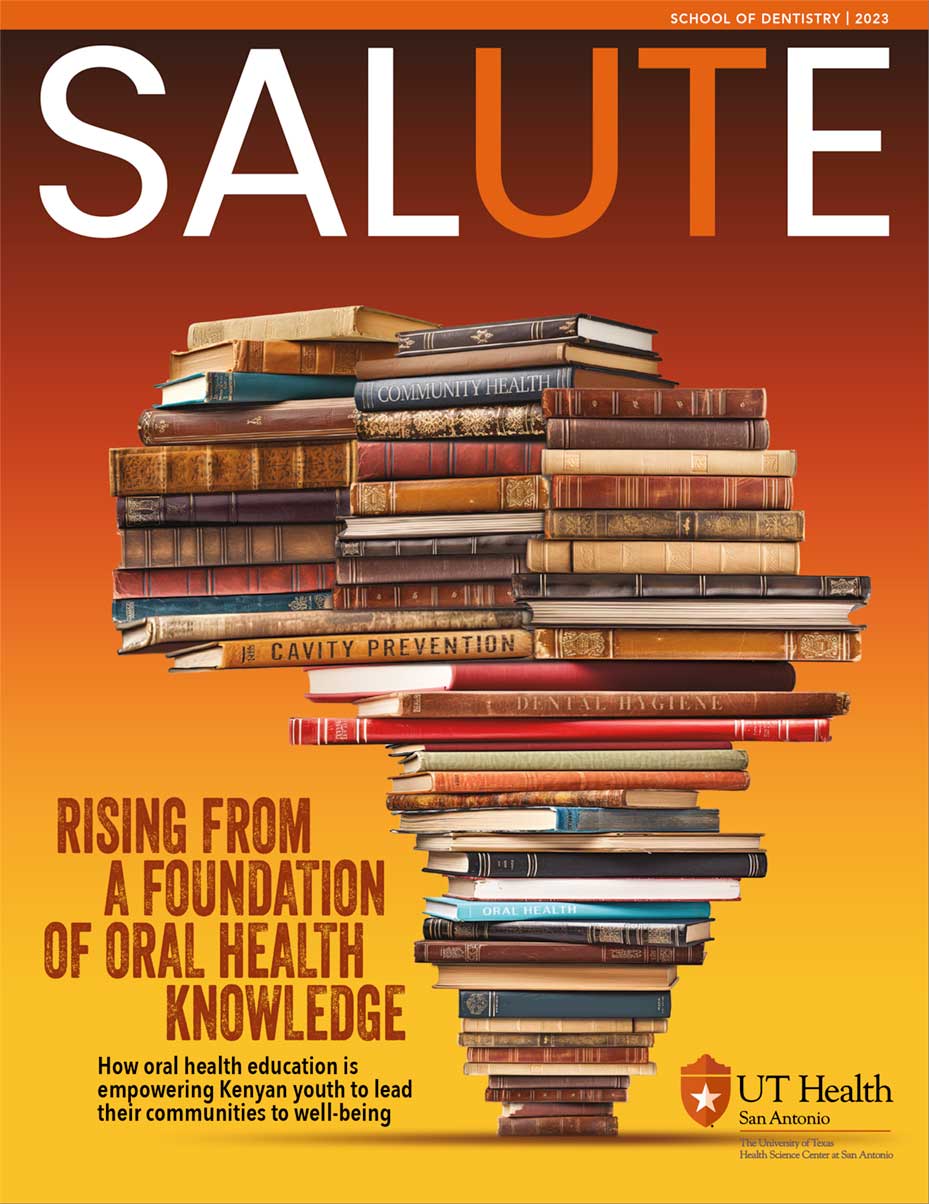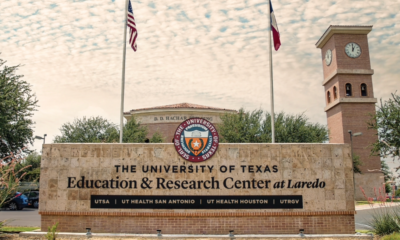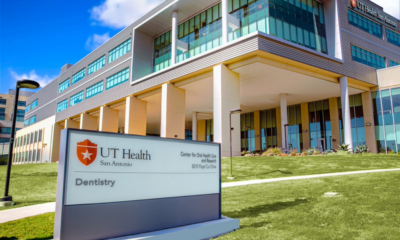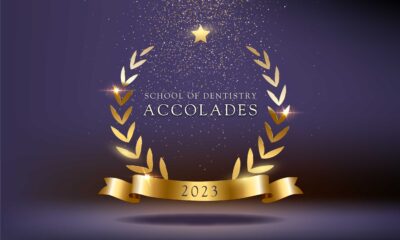Part of something bigger than himself
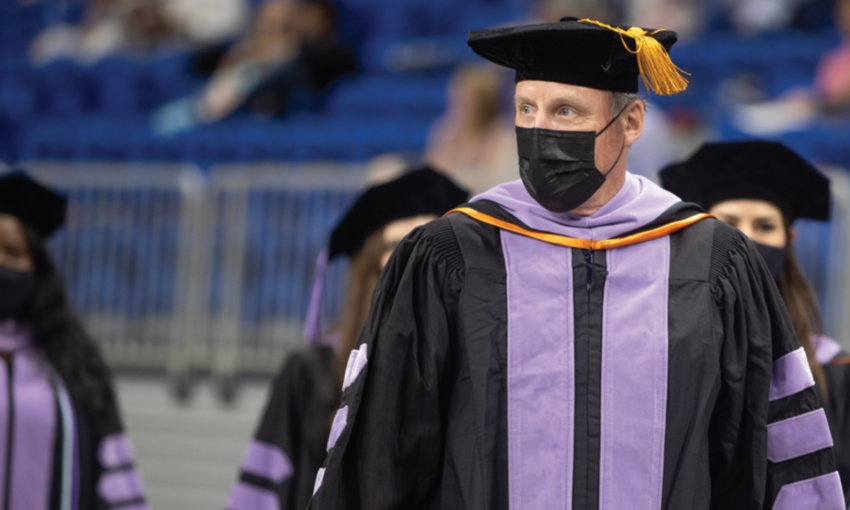
Written by Norma Rabago
A 1980 alumnus ends his 43-year career as a pioneer in dental technology and champion of advanced clinical care
As Gary Guest, DDS, reflected on his 43-year career at The University of Texas Health Science Center at San Antonio School of Dentistry, he remembered when the latest technologies included carousel slide projectors, the department administrator’s IBM Selectric typewriter and Sony Trinitron color TVs.
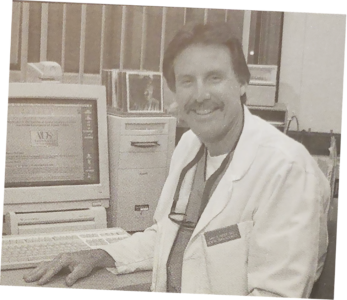
“When considering how we prepared lecture materials, sometimes I think back to the days when you would type on a piece of paper, take a picture of it with a 35-millimeter camera, process it, and that was your slide. I also used a lot of transparencies with an overhead projector. If I wanted to distribute a handout in color, it would cost a dollar a page,” said the recently retired associate dean for patient care.
Gone are the days of transparencies, slides, overhead projectors and high-priced color copies. Today, lecture halls, classrooms, preclinical labs and the patient care practice are filled with the most advanced technologies to enhance the student and patient experience.
A DRIVING FORCE
Guest has been a driving force behind the adoption of those advancements.
“When I started working here, there was no such thing as the internet. I was probably one of the first in the school to have a BITNET address, a precursor to the World Wide Web,” he said. “I taught myself HTML [hypertext markup language] and built the first course website for the School of Dentistry.”
While working on his undergraduate degree at Texas Tech University, Guest took some computer science classes and discovered he had “an affinity for it,” he said.
“It was way back in the days of punch cards and green screens,” he said. “But later, it became a focus of my career when I was fortunate enough to be part of a national think tank for developing a functional specification for a dental patient electronic health record system.”
He and another university colleague were the first in the dental school to implement a picture archiving and communication system, known as a PACS, for radiographic imaging.
Guest’s interest in dentistry started long before his love of computer technology. He said he would often join his cousins on their trips to the orthodontist and was fascinated by the tools used, as well as the art of dentistry and
improvement of patient health.
“I liked gadgets,” he said. That fascination led to a passion for dentistry that broke the family tradition of pursuing business and finance when he enrolled at the health science center’s School of Dentistry.
After graduating in 1980 and working in private practice, Guest chose to join the faculty of his alma mater. He took on patient management efforts and course directorships and became a liaison with the computing resources department, now called information technology. All these experiences eventually led to a path in administration.
THE BUILDING HE HELPED CREATE
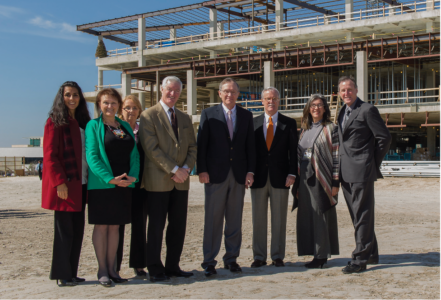
As an administrator, Guest’s office was in the university’s Center for Oral Health Care and Research, a building he helped plan and shape from the ground up, providing oversight of its construction.
“We started with a blank piece of paper. We designed how it looks, what’s inside and how it functions,” he said. “It’s not something most people get to do — working with a major architect, vendors and 200,000 square feet of space — but it was my life for five years.”
Since opening in 2015, over 30,000 patients annually have passed through its doors.
The integrated electronic patient records system used to manage patient appointments and their treatment was also initiated by Guest.
“We were one of the first units to utilize computer-based systems. We tracked patients, patients’ needs and assigned patients [to providers]. That was my introduction to technology other than the computer classes in college,” he said. “As part of the think tank and with funding from the American Fund for Dental Health, we worked on a monograph for all the schools on what a computer-based patient record system should look like.”
Since then, Guest said the first homegrown system evolved into two deployments of commercial patient records systems. Guest was at the center of those deployments with a plan for creating sturdy infrastructure and training.
For his work on the patient record system, a digital imaging system, and for overseeing the construction of the Center for Oral Health Care and Research — home to the school’s clinical practice, UT Dentistry — Guest earned a UT Health San Antonio Presidential Award for Distinguished Service to the Institution in 2016.
The laptop project
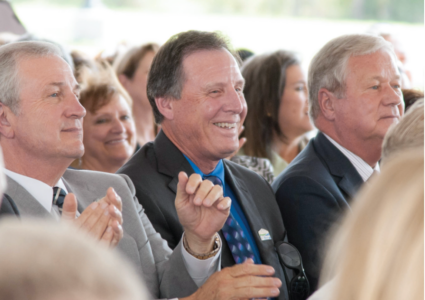
While Guest is proud of the building and all it represents to patients and students, he is equally proud of the student laptop deployment program, now in its 20th year.
“We asked ourselves, where does teaching and patient care occur? It occurs in the lecture hall, simulation lab, library, home or clinic. So, we purchased the very first MacBooks,” he said. “The laptops were used in basic sciences, and they had electronic books and manuals, preclinic courses and video and were used in the clinics. The laptop became a tactical way to deliver the solution.”
From Guest’s point of view, the laptops helped transform the next generation into competent health care providers, able to treat and better manage their patients.
Vision becomes reality
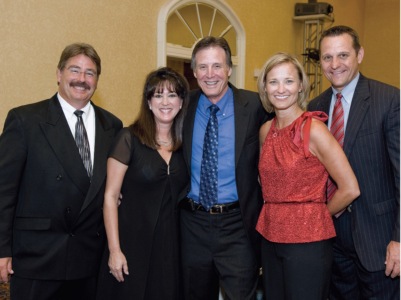
For Guest, life after retirement includes spending time outdoors, enjoying sports such as running — a holdover from his college days as a track and field athlete — learning more about the latest technological advances and spending time with his family, including his wife, software engineer son, pediatric dentist daughter and three grandchildren.
“I have a very nice off-road bike sitting in the garage that I’m looking forward to using,” he said.
Sitting in a building he helped create, Guest reflects fondly and humbly on his career.
“It’s one thing to have a vision for the future, and it is special when it becomes a reality,” he said. “At the end of the day, I can look back and think I was very fortunate for the many talented colleagues, staff and students [who] enabled these impactful endeavors. I was part of something much bigger than myself.”
A fond farewell
The School of Dentistry also bids farewell to two long-serving leaders who have woven their experience into the fabric of dental education. With a combined service of 60 years, their contributions have shaped minds, inspired growth and left an indelible mark on the institution.
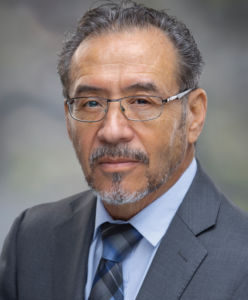
Vidal G. Balderas, DDS, MPH, retired in March as an associate professor after 36 years in the Department of Comprehensive Dentistry. Balderas has committed his career to teaching students how to become compassionate dental providers. His passion for vulnerable populations in San Antonio has fueled the establishment of many community-based programs and student outreach opportunities.
Balderas used his lived experience as a young migrant farmworker to establish the San Antonio Independent School District Migrant Farmworker Children Mobile Van Program, which provided free dental care to children of low-income migrant farmers. He also directed the Primary Dental Care Program Rotation for the Homeless, allowing dental and dental hygiene students to provide care to individuals experiencing homelessness and to low-income San Antonians. Balderas is an alumnus of the School of Dentistry, earning his DDS in 1984. He received his MPH from UT Health School of Public Health in Houston.
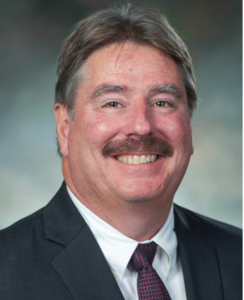
Kevin J. Donly, DDS, MS, retired in February as chair of the Department of Developmental Dentistry after 24 years in dental education. As a pediatric dentist for over 35 years, Donly focused his career on providing care to children, adolescents and youth with special health care needs, predominantly in Texas’ underserved communities. His work in this space earned him the American Academy of Pediatric Dentistry’s 2021 Ann Page Griffin Humanitarian Award.
Donly has served as president of the American Academy of Pediatric Dentistry and of the American Society of Dentistry for Children and in other leadership positions within organized dentistry across the U.S. and in Texas. He has published more than 250 chapters, manuscripts and abstracts associated with pediatric dentistry, dental restorative materials research and clinical utilization.
Donly was presented with the Texas Academy of Pediatric Dentistry’s 2023 Lifetime Achievement Award. He received his DDS in 1984, and a certificate in pediatric dentistry and an MS in 1986 from The University of Iowa College of Dentistry and Dental Clinics. He is a diplomate of the American Board of Pediatric Dentistry.

